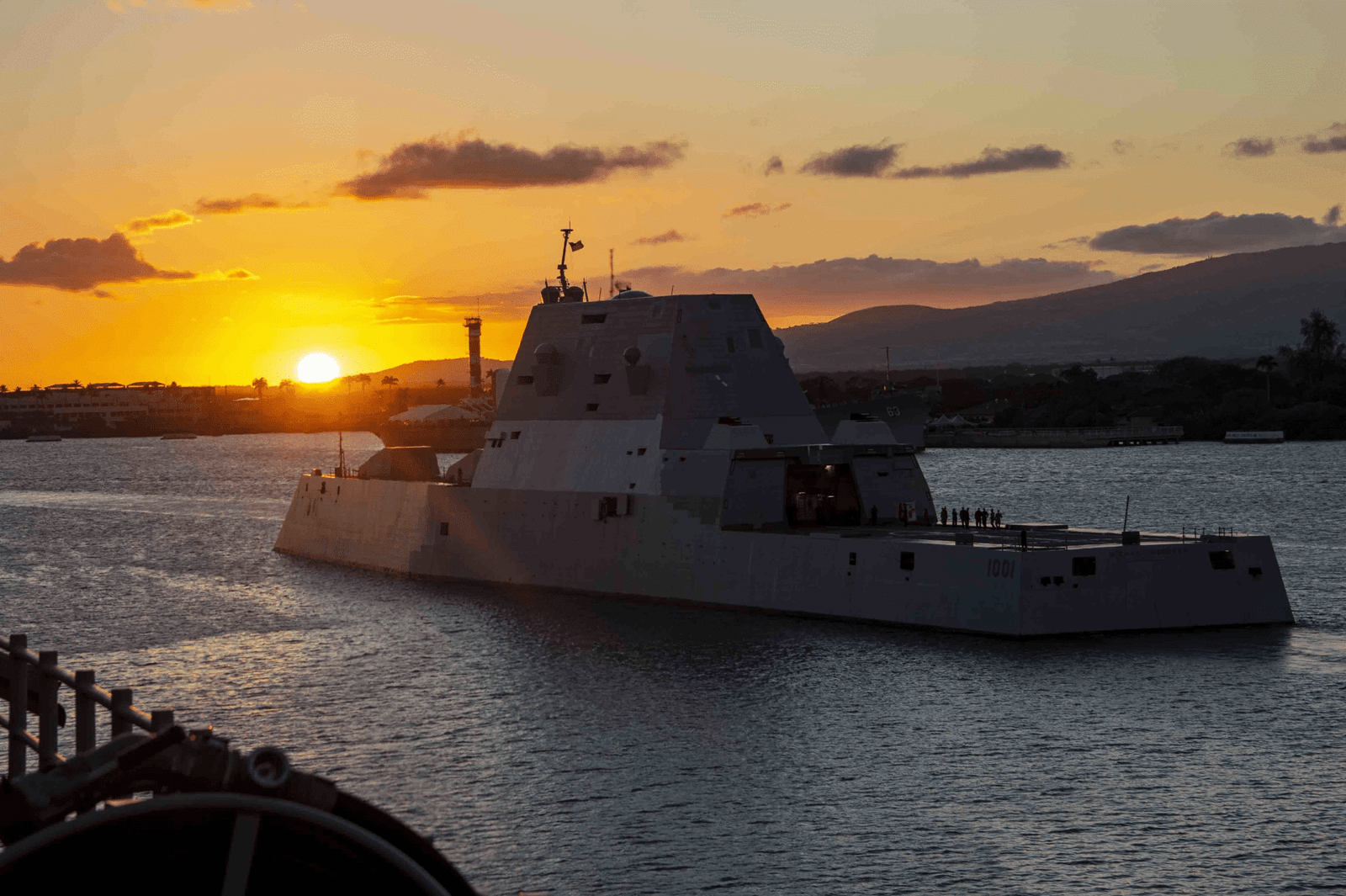
The Zumwalt-class destroyers were always a bit of an enigma for the U.S. Navy. Conceived as stealthy, multi-mission surface warships with cutting-edge technology, they were meant to revolutionize naval warfare. Instead, they are infamous for staggering costs, a drastically diminished fleet, and a primary weapon—the 155mm Advanced Gun System—that never quite materialized. The advanced ammunition was exorbitantly costly, reducing these behemoths to having no apparent main armament—or, at least for a period, no apparent mission.

Now, however, the Zumwalts are getting a dramatic second act. The Navy has decided to turn them into the first U.S. surface ships capable of launching hypersonic missiles, a move that could finally make these destroyers strategically relevant. This isn’t just a surface-level upgrade; it’s a fundamental rethink of how the Navy approaches power projection, deterrence, and surface combat in the modern era.

The modifications are extensive. The previously dominant Advanced Gun Systems at the bow of each ship are being replaced to accommodate four huge launch tubes. Each tube, Navy program manager Capt. Clint Lawler stated, is 87 inches in diameter and can triple-pack Advanced Payload Module canisters, each of which carries three Intermediate-Range Conventional Prompt Strike (IRCPS) hypersonic missiles.

That translates to a Zumwalt-class destroyer being able to carry up to 12 hypersonic weapons. It takes massive structural modifications, such as extracting deeply embedded gun mounts, bolstering bulkheads, and embedding new fire control and combat systems to handle hypersonic strike missions.

The missiles themselves are an advance in technology. They were developed collaboratively with the U.S. Army; the CPS missile of the Navy has a common boost-glide vehicle with the LRHW of the Army, Dark Eagle.

The weapons are boosted into flight by rocket propellants to a speed of more than Mach 5 before the separation of the glide vehicle, which flies toward its target through high unpredictability. The marriage of hyper speed and agility makes hypersonic missiles very hard to detect or intercept, perfect for attacking high-value, time-sensitive targets deep within hostile territory.

It makes sense strategically. Hypersonics reduce time-to-target and provide survivability at long range against sophisticated defenses. In an era where competitors such as Russia are building their hypersonic arsenals and heavily investing in anti-access/area-denial (A2/AD) systems, being capable of delivering swift, hard-to-halt attacks from stealthy platforms is a huge plus. The Zumwalt’s low radar profile and sophisticated communications capabilities make it particularly good at entering hotly contested zones and delivering devastating strikes before adversaries can respond.

Challenges, however, remain. The Navy’s aggressive schedule for fielding hypersonic missiles on the Zumwalt has already been running behind in testing and integration. “The Navy has yet to identify test conditions and associated test resources that will be evaluated across the three CPS phases to adequately assess lethality and operational effectiveness in the threat-contested environment,” officials observe. With only three vessels in the class, all equipped with special hardware and software, these ships will be expensive and challenging to maintain and upgrade. Standardization of radar and combat systems is currently discussed as a means to ease maintenance and integration.

In spite of these challenges, the Navy is pressing ahead. USS Zumwalt has already back to the water following a 14-month refit, with its new hypersonic launchers installed. USS Lyndon B. Johnson is coming on stream with hypersonic capability from day one, while USS Michael Monsoor will get its upgrades in a future modernization program. Budget reports suggest an unambiguous commitment to fielding hypersonic weapons on all three ships within the next decade.

Once hailed as a cautionary tale of ambition run amok, the Zumwalt-class destroyers could yet discover their mission. By adopting revolutionary strike technology and redefining the surface combatant role in future naval warfare, the Navy is wagering that these massive stealth ships will take their rightful place as a key component of 21st-century maritime power.
More related images you may be interested in:





